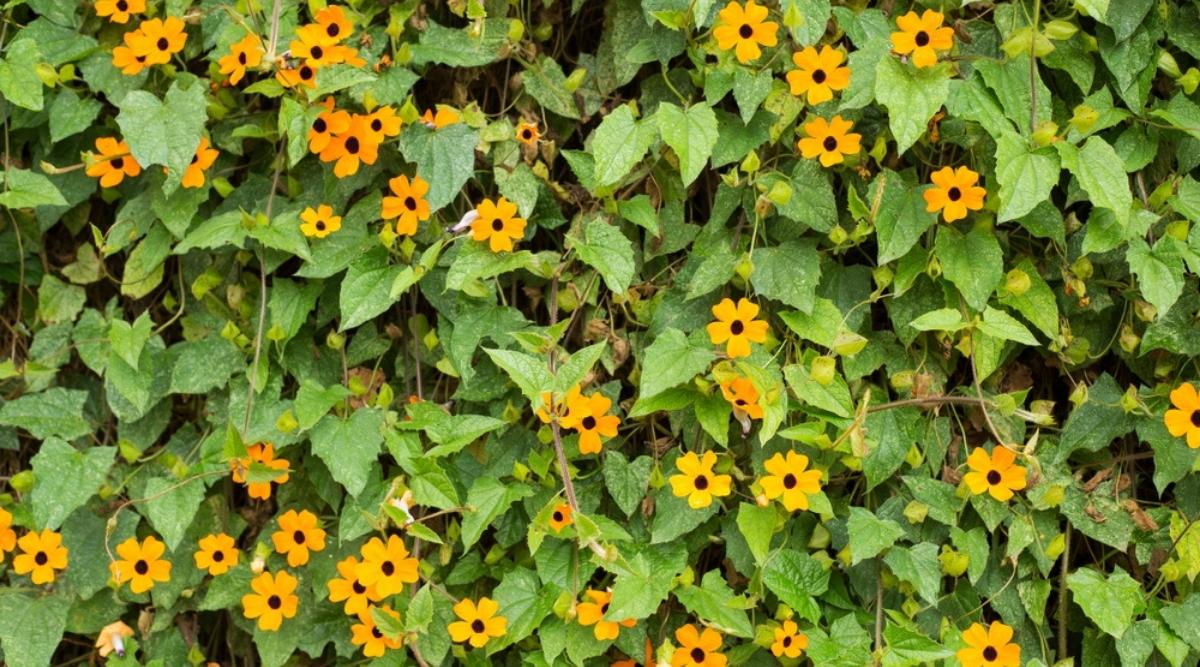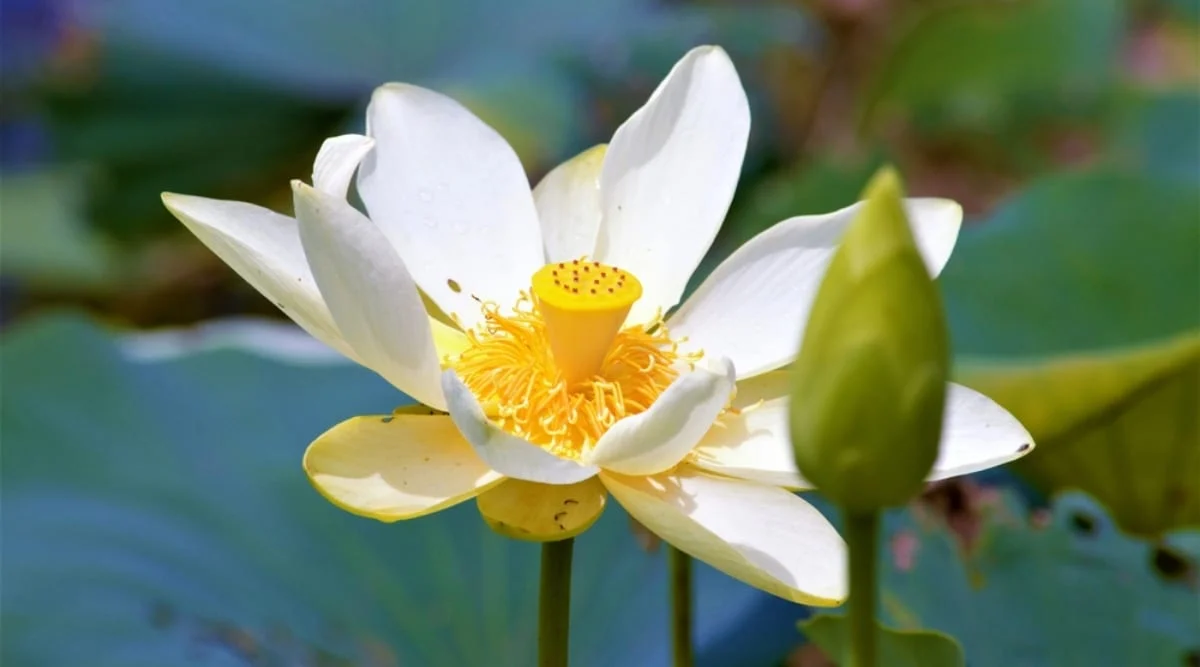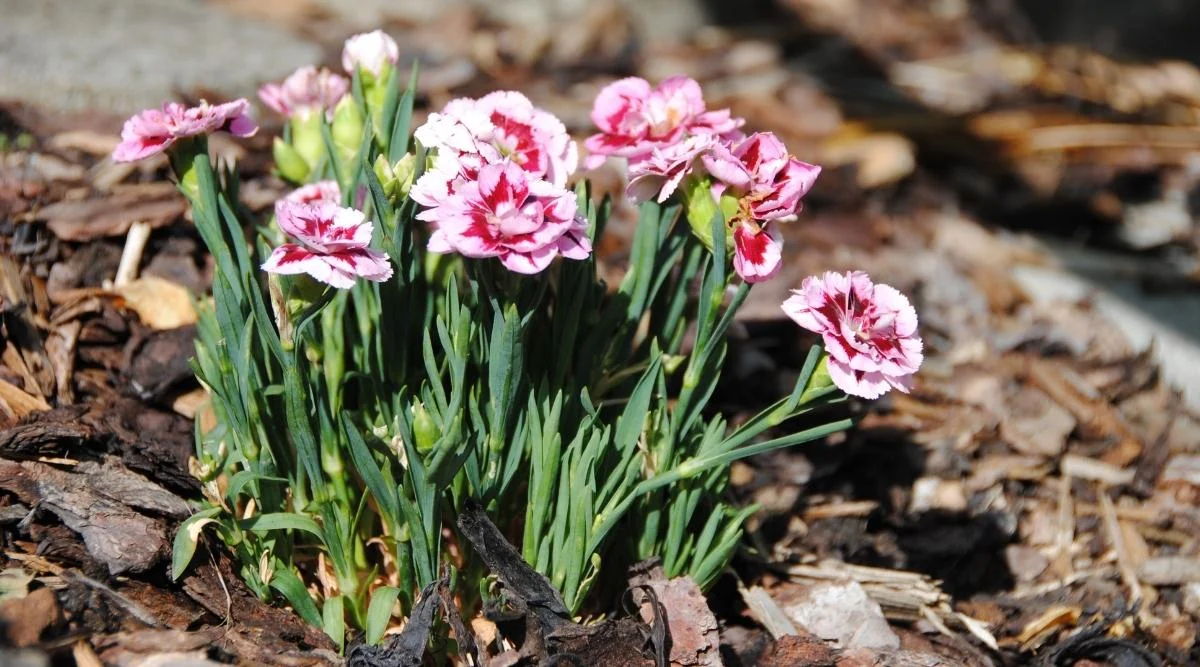
Black-Eyed Susan Vine: A Climbing Beauty with Vibrant Blooms
mikephilipsforcongress.com – The Black-Eyed Susan Vine, scientifically known as Thunbergia alata, is a stunning flowering vine that brings a tropical flair to gardens, patios, and hanging baskets. Despite its name, this vine is not a true relative of the Black-Eyed Susan wildflower, but it shares the same iconic bright yellow petals and dark centers. With its fast-growing habit, colorful blooms, and ability to climb and trail, the Black-Eyed Susan Vine is a favorite choice for gardeners looking to add vertical interest and a pop of color to their landscapes.
Appearance and Characteristics
The Black-Eyed Susan Vine is a vigorous, twining plant that produces vibrant flowers with distinctive orange, yellow, or white petals and dark, contrasting centers, resembling the flower of the Black-Eyed Susan wildflower. The flowers typically grow 1 to 2 inches (2.5 to 5 cm) in diameter and form in clusters, covering the vine in waves of color throughout the blooming season.
In addition to its striking flowers, the plant features lush green, heart-shaped leaves that serve as a backdrop to the blooms. The vine can grow anywhere from 6 to 10 feet (1.8 to 3 meters) in length, making it an excellent choice for trellises, arbors, fences, or as a ground cover in both containers and garden beds.
Black-Eyed Susan Vine typically blooms from mid-summer through fall, with the flowers attracting pollinators such as bees, butterflies, and hummingbirds. The plant’s rapid growth and ability to produce abundant flowers make it a valuable addition to gardens that need an instant burst of color and interest.
Growing Conditions and Care
The Black-Eyed Susan Vine thrives in warm, sunny climates and is best suited for USDA hardiness zones 10 to 11, as it is sensitive to frost. It requires full sun to bloom profusely, although it can tolerate light shade in cooler climates. The plant enjoys well-drained, moderately fertile soil and benefits from regular watering during the growing season, especially in hot, dry conditions. However, it does not like to be waterlogged, so it is important to ensure the soil has proper drainage.
This fast-growing vine needs a support structure, such as a trellis, fence, or arbor, to climb and spread. It is a perfect choice for vertical gardening, allowing gardeners to add height and dimension to their outdoor spaces. Alternatively, it can be grown in containers or hanging baskets, where it can cascade down and create a beautiful trailing effect.
Although the Black-Eyed Susan Vine is relatively low-maintenance, it benefits from occasional pruning to keep its shape and encourage more blooms. Pruning the plant back after its first flush of flowers will promote additional growth and more vibrant blooms. Regular deadheading of spent flowers will also help extend the blooming period and keep the plant looking tidy.
Benefits and Uses
The Black-Eyed Susan Vine’s ability to climb and cover structures quickly makes it a great plant for creating living walls, green fences, or screens. Its vibrant, colorful flowers can hide unsightly areas in the garden, such as utility posts or garden sheds, and provide a decorative, natural touch to outdoor spaces.
This vine is also an excellent choice for adding vertical interest to small gardens, balconies, or patios where space is limited. It can be grown in containers or hanging baskets, where its trailing vines create a cascading effect and add a touch of charm to any space. When planted along fences, trellises, or arbors, the vine creates a beautiful and dynamic floral display that can complement other plants or flowering vines.
Beyond its ornamental value, the Black-Eyed Susan Vine is a valuable plant for pollinators. The flowers attract bees, butterflies, and hummingbirds, making it an excellent addition to wildlife-friendly gardens or butterfly gardens.
Symbolism and Cultural Significance
While the Black-Eyed Susan Vine doesn’t carry the same deep symbolism as the wildflower version of Black-Eyed Susan, it is still admired for its beauty and resilience. In many cultures, flowers with bold, vibrant colors, like those of the Black-Eyed Susan Vine, represent joy, happiness, and positivity. The contrast between the bright petals and dark center is often associated with balance and harmony, as it draws attention to the central focus of the bloom.
In addition to its aesthetic value, the Black-Eyed Susan Vine has been used in some cultures for medicinal purposes, although it is not as commonly utilized as other medicinal plants.
Conclusion
The Black-Eyed Susan Vine is an eye-catching, versatile flowering plant that adds vibrant color and a tropical feel to gardens, patios, and other outdoor spaces. Its rapid growth, bright blooms, and ability to climb and trail make it perfect for creating vertical gardens, covering fences, or adding dynamic beauty to containers. The vine’s appeal extends beyond its visual impact, as it attracts pollinators and supports biodiversity in the garden. Whether you are looking to brighten up a dull fence, create a stunning hanging basket, or add some vertical interest to a small space, the Black-Eyed Susan Vine is an excellent choice that will provide months of beauty and enjoyment.


